
How can batik entrepreneurs expand their products into the global market? What is the government’s stance on this national craft and how can they help? I talked to the Malaysia External Trade Development Corporation (MATRADE) to find out. As Malaysia’s national trade promotion agency, MATRADE can provide a variety of services and aid to businesses who want to market their batiks abroad. Established in March 1993, their mission is to help Malaysian exporters develop and expand their products overseas. As Chief Executive Officer of MATRADE, Dato’ Noharuddin Nordin’s advice and opinions are invaluable to those who want to market their batiks abroad.
When asked about the international opinion of batik, Dato’ Noharuddin Nordin’s answer was that there is no opinion. Batiks have not made it into mainstream fashion and not many people even know of the existence of this textile. Because batiks are so uncommon, not many foreigners abroad have the opportunity to see a batik so there is no way for them to even form an opinion. If consumers do not know about this textile then they also will not go out of their way to search for it. Batiks are not seen in public events world-wide and never on red-carpet events or worn by celebrities. Those who do get the chance to see a batik are impressed but still see them as novelty items and not for everyday use. Even within Malaysia they are seldom worn. Although Batiks are supposed to be worn on Fridays by government employees, Noharuddin Nordin admits that he, like many others do not because the Malaysian batik style and material (silk) is just too uncomfortable in this hot climate.
The younger generation especially have gravitated away from this traditional textile in favor of more contemporary, western attire.
In order for batiks to survive, Noharuddin Nordin asserts that they must make it into mainstream international fashion in any way possible. Indonesian, Thai, Chinese batik– it doesn’t matter as long as one of them penetrates. Only then can the industry come alive and thrive. When it does, he says with a confident smile, “Malaysian batiks will surely rise above all others to become the head of the industry.” Batik production in Malaysia is an old and established tradition he explains, and only Malaysia will have the knowledge and means to meet international demand. He furthermore asserts that, “if foreign designers want to copy the batik concept, then let them! The important thing is that batiks make it into the mainstream fashion. "Malaysian designers have the knowledge and factories to overcome competitors abroad who are young and inexperienced in the batik industry”.
MATRADE’s role in the fashion industry is not the same as its role in promoting other goods and materials. Usually Malaysian products are promoted in trade fairs. The fashion world is different however. As Noharuddin Nordin explains, “you are either in or you’re out”. Even within the RM10 billion Malaysian apparel industry, batiks stand apart. Unlike others, batiks are not machine, but hand-made. It is an art form that has melded into fashion.
Thus, is batik to be sold as Art or Craft? “Both!” Noharuddin Nordin declares. The difference between them is that Craft is mass- produced whereas Art is one-of-a kind. It is the difference between small quantity and mass production. With batik, Noharuddin Nordin believes that one must find the middle ground. Companies must produce and sell enough pieces to make batik ubiquitous, yet preserve it’s unique artistic nature. At the moment, MATRADE focuses on marketing batiks in fashion rather than art because “paintings are not often sold whereas fashion is always evolving and changing.”
In other countries such as Thailand and Indonesia, it has become common to market a machine-made fabric as “batik.” Dato’ Noharuddin Nordin emphasizes that Malaysia must not follow in their footsteps. It is vital that the hand-made aspect remain a defining feature of batik and Malaysia must not deviate way from this. Each piece must be seen as unique. That is Malaysia’s strength and the only way Malaysian batiks will succeed. Price furthermore is not an issue in the fashion world. Quality is better than quantity, even if it is more expensive.
Since Europe is at the forefront of the fashion industry, it is they who control the fashions and determine what is “in”. Thus, Malaysia must look to them to create the designs. Because most Malaysian designers can not afford to host catwalks abroad, they must get the international industry to promote batiks on their catwalks first. That is how they will get the endorsements, celebrity support and public recognition necessary to succeed. For companies who are afraid to advertise and publicize because they are afraid their products will be stolen Nordin says, “We must show the world what we can do before they will buy.”
In an effort to help batik entrepreneurs penetrate the fashion industry, MATRADE has helped to bring several Malaysian Batik designers to events on the international level. In the year 2008 MATRADE brought Jendela batik and Anggun Collection to the Hong Kong Fashion Week For Spring to Summer where sales grossed RM685,000. That is nothing however compared to “Who’s Next Paris” where sales grossed 3.9 million. The four batik companies who attended were Jendela Batik, Nazleen Noor, Mira Zarna, Tom Abang Saufi. Furthermore, MATRADE provides many grants and companies can claim 50% reimbursement on travel and going abroad. Furthermore, it is not always necessary to register with MATRADE to benefit from their help. There are restrictions however and companies must show that they are using the money wisely .
MATRADE also supports local fashion shows. Nordin explains that, “big companies want to be seen at the right event and it is difficult to convince them to come to Malaysia because it is unknown territory.” It is a vicious cycle however because there is no way to become known until they come. Once one big name comes however, Malaysia will be noticed and a “curiosity effect” will happen in which many designers will flock to Malaysia.
Dato’ Noharuddin Nordin emphasizes that in order to succeed, batik companies must first understand the needs of the market. Unlike in Malaysia, where the same clothes are worn year-round; in the Western world, fashion is a fleeting industry and each season has new designs and colors. Malaysian designs most move with them and constantly evolve. The changes in climate also mean that silk batiks can only be worn in warm climates. In the winter, many foreigners must exchange batiks for warmer clothing, or pair it with other articles. While catering to foreign tastes, it is ok however to promote one’s product as “Malaysian” as long as designers take into account the popular styles and designs abroad. Furthermore, it is possible to work with traditional Malay motifs but alter them to be accepted on the international level.
Not only does Malaysia market to the international community, but the international market has penetrated Malaysia as well. Fashion trends have changed in Malaysia as a result of the international influence. The younger generation want to wear Western clothing. Since students who go abroad never wear batiks, they do not help to spread this national attire. Even within Malaysia, not many people wear them. The options and designs here are too limited. Silk is often too hot to wear, but it is the only material that is sold. Designers must move with these changing trends and demands in order to survive.
In order for batiks to survive, Noharuddin Nordin asserts that they must make it into mainstream international fashion in any way possible. Indonesian, Thai, Chinese batik– it doesn’t matter as long as one of them penetrates. Only then can the industry come alive and thrive. When it does, he says with a confident smile, “Malaysian batiks will surely rise above all others to become the head of the industry.” Batik production in Malaysia is an old and established tradition he explains, and only Malaysia will have the knowledge and means to meet international demand. He furthermore asserts that, “if foreign designers want to copy the batik concept, then let them! The important thing is that batiks make it into the mainstream fashion. "Malaysian designers have the knowledge and factories to overcome competitors abroad who are young and inexperienced in the batik industry”.
MATRADE’s role in the fashion industry is not the same as its role in promoting other goods and materials. Usually Malaysian products are promoted in trade fairs. The fashion world is different however. As Noharuddin Nordin explains, “you are either in or you’re out”. Even within the RM10 billion Malaysian apparel industry, batiks stand apart. Unlike others, batiks are not machine, but hand-made. It is an art form that has melded into fashion.
Thus, is batik to be sold as Art or Craft? “Both!” Noharuddin Nordin declares. The difference between them is that Craft is mass- produced whereas Art is one-of-a kind. It is the difference between small quantity and mass production. With batik, Noharuddin Nordin believes that one must find the middle ground. Companies must produce and sell enough pieces to make batik ubiquitous, yet preserve it’s unique artistic nature. At the moment, MATRADE focuses on marketing batiks in fashion rather than art because “paintings are not often sold whereas fashion is always evolving and changing.”
In other countries such as Thailand and Indonesia, it has become common to market a machine-made fabric as “batik.” Dato’ Noharuddin Nordin emphasizes that Malaysia must not follow in their footsteps. It is vital that the hand-made aspect remain a defining feature of batik and Malaysia must not deviate way from this. Each piece must be seen as unique. That is Malaysia’s strength and the only way Malaysian batiks will succeed. Price furthermore is not an issue in the fashion world. Quality is better than quantity, even if it is more expensive.
Since Europe is at the forefront of the fashion industry, it is they who control the fashions and determine what is “in”. Thus, Malaysia must look to them to create the designs. Because most Malaysian designers can not afford to host catwalks abroad, they must get the international industry to promote batiks on their catwalks first. That is how they will get the endorsements, celebrity support and public recognition necessary to succeed. For companies who are afraid to advertise and publicize because they are afraid their products will be stolen Nordin says, “We must show the world what we can do before they will buy.”
In an effort to help batik entrepreneurs penetrate the fashion industry, MATRADE has helped to bring several Malaysian Batik designers to events on the international level. In the year 2008 MATRADE brought Jendela batik and Anggun Collection to the Hong Kong Fashion Week For Spring to Summer where sales grossed RM685,000. That is nothing however compared to “Who’s Next Paris” where sales grossed 3.9 million. The four batik companies who attended were Jendela Batik, Nazleen Noor, Mira Zarna, Tom Abang Saufi. Furthermore, MATRADE provides many grants and companies can claim 50% reimbursement on travel and going abroad. Furthermore, it is not always necessary to register with MATRADE to benefit from their help. There are restrictions however and companies must show that they are using the money wisely .
MATRADE also supports local fashion shows. Nordin explains that, “big companies want to be seen at the right event and it is difficult to convince them to come to Malaysia because it is unknown territory.” It is a vicious cycle however because there is no way to become known until they come. Once one big name comes however, Malaysia will be noticed and a “curiosity effect” will happen in which many designers will flock to Malaysia.
Dato’ Noharuddin Nordin emphasizes that in order to succeed, batik companies must first understand the needs of the market. Unlike in Malaysia, where the same clothes are worn year-round; in the Western world, fashion is a fleeting industry and each season has new designs and colors. Malaysian designs most move with them and constantly evolve. The changes in climate also mean that silk batiks can only be worn in warm climates. In the winter, many foreigners must exchange batiks for warmer clothing, or pair it with other articles. While catering to foreign tastes, it is ok however to promote one’s product as “Malaysian” as long as designers take into account the popular styles and designs abroad. Furthermore, it is possible to work with traditional Malay motifs but alter them to be accepted on the international level.
Not only does Malaysia market to the international community, but the international market has penetrated Malaysia as well. Fashion trends have changed in Malaysia as a result of the international influence. The younger generation want to wear Western clothing. Since students who go abroad never wear batiks, they do not help to spread this national attire. Even within Malaysia, not many people wear them. The options and designs here are too limited. Silk is often too hot to wear, but it is the only material that is sold. Designers must move with these changing trends and demands in order to survive.
A common confusion is the definition of a “Malaysian product.” For example, what if the batik was created in Indonesia or if the silk material came from China? Dato’ Noharuddin Nordin clarifies that neither of those things matter, as long as the company is based in Malaysia and the money comes back to the country, it is a product of Malaysia and the company can register with MATRADE. In fact, he asserts, it is only logical to get silk from China because they have hundreds of years of expertise in the field whereas Malaysia does not actively produce silk. “Every country has their strength,” he declares and “where the silk actually comes from does not matter to most consumers.”
Batik’s success in the international market will not be accomplished overnight and designers and batik entrepreneurs must work hard and be persistent. Dato’ Noharuddin Nordin vows that MATRADE will not give up and they are determined to help batik companies succeed.
After a free registration, MATRADE can then meet with batik companies to see if they are moving in the right direction and give them advice to succeed. Not everyone is able to market internationally Dato’ Noharuddin Nordin says. Furthermore, it is not necessary to have a lot of batik companies working internationally right now. MATRADE wants to focus on a few quality companies who represent the “best of the best in Malaysia.” Once even one succeeds, the rest can piggy-back on its success. The unique and beautiful textile of batik will undoubtedly find its place in the international market and when it does, declares Dato’ Noharuddin Nordin, “Malaysia stands a great chance to be at the top.”
Contact: (Director of Product Unit) Pn. Wan Norma
Tel: 03-6207 7660
e-mail: wnwd@mattrade.gov.my
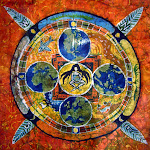
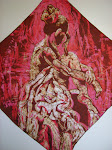

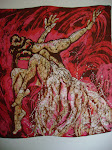


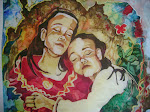

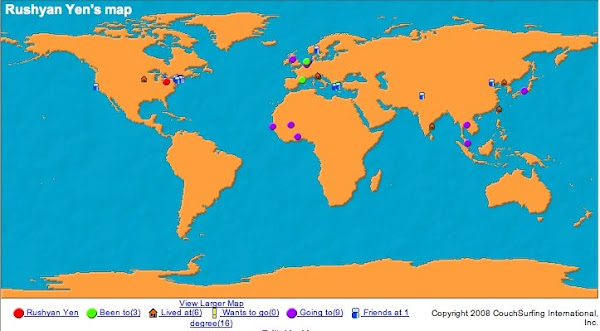
14 comments:
thats amazing story.
very nice! hahahahaha
well its nice to know that you have great hits here.
not bad.
wow, very special, i like it.
im your favorite reader here!
ok. I found an information here that i want to look for.
i think you add more info about it.
well its nice to know that you have great hits here.
im your favorite reader here!
very nice! hahahahaha
very clever.
wow, very special, i like it.
thats amazing story.
Post a Comment